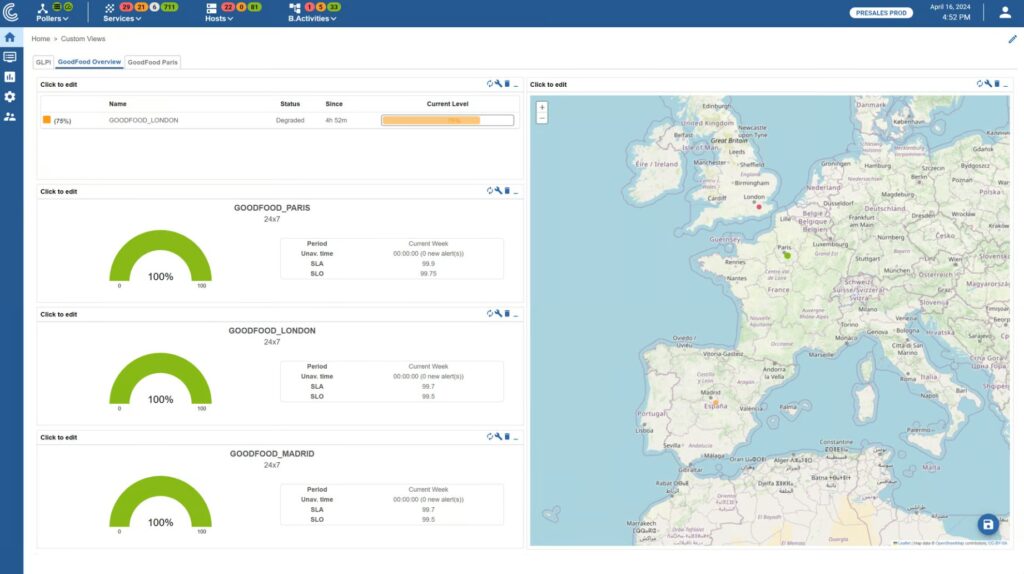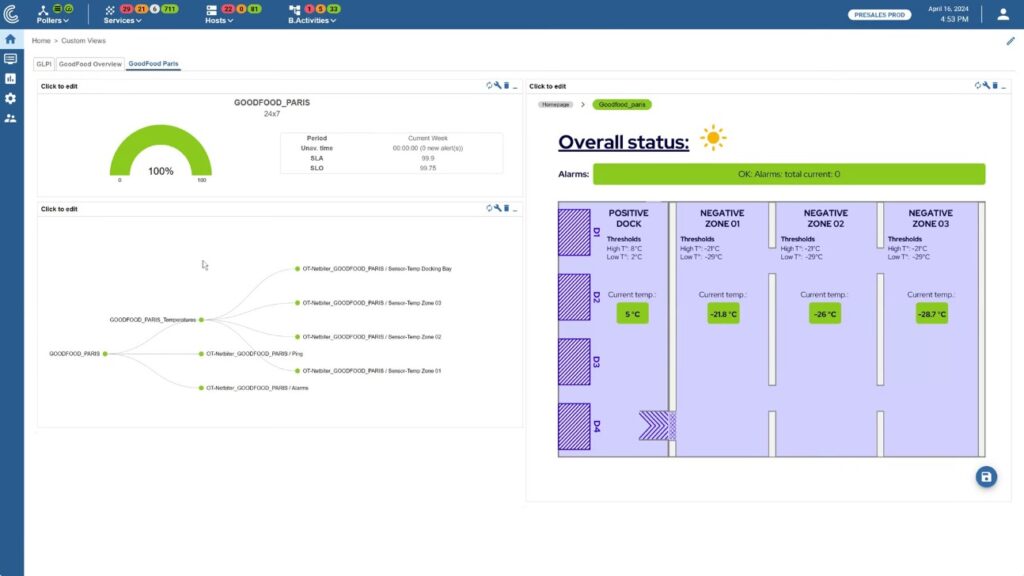In a span where networks, OT equipment, and sites are growing at an exponential rate, visibility becomes a prime concern. When you are confronted with monitoring thousands of devices scattered across multiple sites, a real-time, comprehensive view of your operational landscape is crucial. Hence, your entire process should not merely rely on a scrolling event console marked with the traditional green, yellow, and red statuses.
Centreon offers OT monitoring capabilities through its range of connectors, but not only. This is where geographical and operational views step in, significantly driving efficiency and reducing maintenance costs. But how do we differentiate between the two and choose the one most suited to our needs?
Geographical views vs. operational views: understanding the basics
Geographical views offer a bird’s eye perspective, presenting a color-coded indicator of each site’s operational status on a map. This type of view is especially potent when you are monitoring several locales. However, geographical views are not self-sufficient. When something goes awry at a particular site, a meticulous, site-specific operational view becomes indispensable. This operational view can encompass a building or a local map, delineating all the critical equipment, network connections, and their real-time status.

Geographical views are typically showcased on large screens in your Network Operations Centre (NOC) to provide a general overview of site statuses. When monitoring operations on a larger scale, you can also create regional views for local IT and OT teams.

Operational views, on the other hand, are harnessed to dissect the root cause of a problem and speed up Mean Time To Repair (MTTR). To be effective, operational views should be designed to closely resemble the physical world on-site. They should also provide seamless accessibility from the geographical view and possess drill-down capabilities for a deep-dive analysis.
The art of sharing views
With the IT and OT convergence becoming more prominent, it’s essential to create a collaborative environment where sharing of critical operational data is enabled in real-time. This is precisely what geographical and operational views facilitate. By fostering collaboration and knowledge sharing they, most importantly, empower predictive maintenance – showing maintenance teams the indicators needed for proactive optimization.
Consider designing layered views for more nuanced insights. For example, you can have a set of views solely for network connectivity, another for OT devices, and a third that amalgamates the status of your business applications.
The benefits
The benefits of maintaining clear, real-time visibility of your operational landscape across a vast geographical range are manifold. Ensuring uptime prevents operational disruptions, as teams can swiftly respond once a fault is detected. Moreover, the ability to maintain dozens or hundreds of sites with a clear understanding of events, enables remote troubleshooting, reduces maintenance costs, and ensures a longer Mean Time Between Failure (MTBF).
In conclusion, both geographical and operational views possess distinctive merits. The key is to understand your individual requirements and pick the views accordingly to create a robust and efficient OT equipment monitoring system.
To go Further
- You are ready to conquer the complexities of IT & OT convergence, but you don’t know how and where to start? We’re here to help! This step-by-step survival guide will show you what are the 5 key building blocks for IT and OT convergence management. Download the survival guide.
- Interactive demo: monitor OT with Centreon, explore a real-life IT & OT convergence case. Access the OT demo now!
- Meet the challenges of IT and OT convergence to connect the physical and digital worlds. Check out our ebook “Bridging the physical and digital worlds”, where we help IT Operations teams navigate convergence challenges and share expert tips for achieving smooth visibility and efficiency! Download our ebook.
- Have a look at our blog Monitoring OT with Centreon and Raspberry Pi
- Learn more about Centreon editions: The Centreon platform is available in several editions. Choose the one that best suits your needs. Compare Centreon editions. Centreon Monitoring is available as a SaaS version. Discover Centreon Cloud.
- Contact us for a Centreon demo.
- To keep up to date with Centreon news and event, sign up for our newsletter.
- Visit our resource center: ebooks, guides, reports, success stories, tutorials, and more to help you in your IT monitoring 🙂





